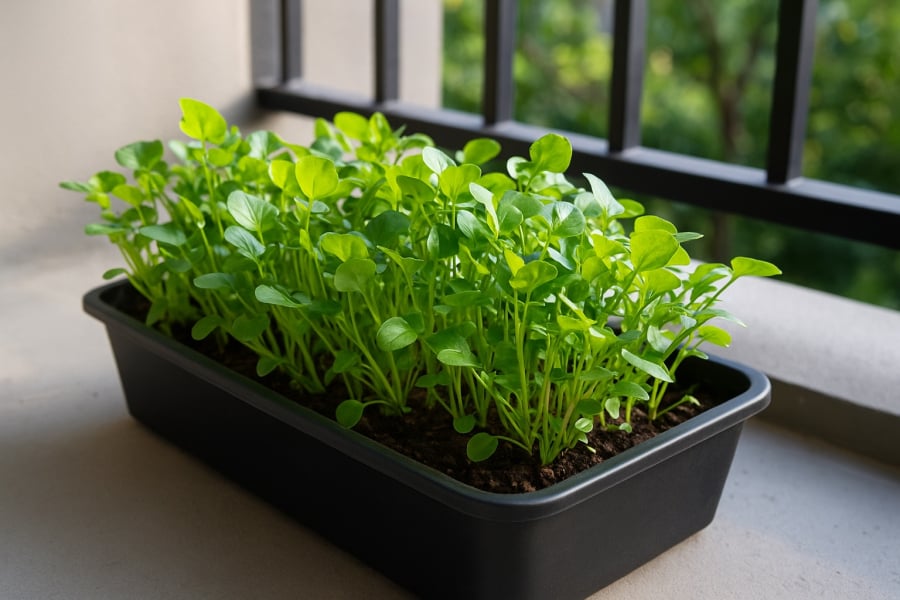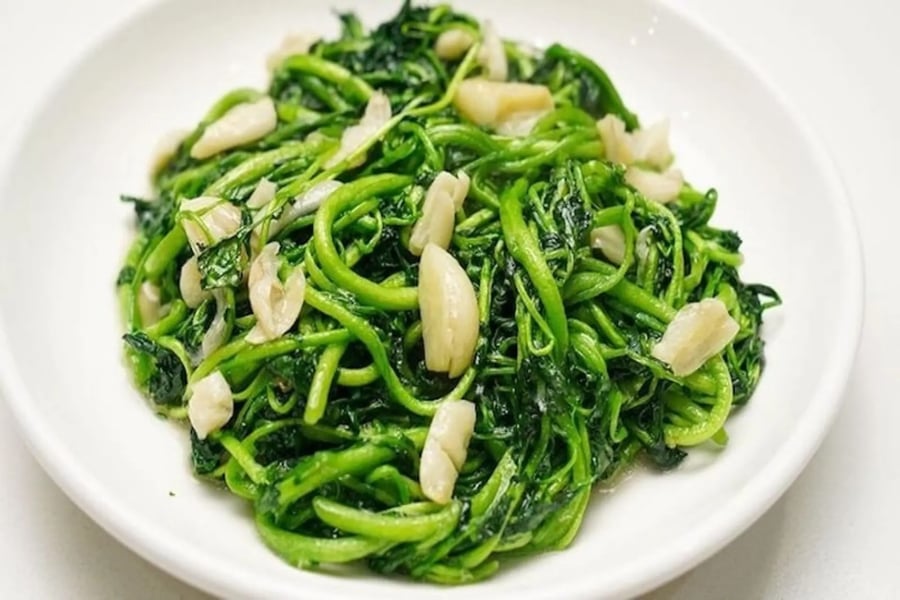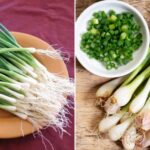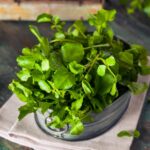Watercress – An Easy-to-Grow, Long-Lasting Aquatic Vegetable
Watercress, also known as salad cress, is a herbaceous vegetable of the brassica family that thrives in cool, moist environments with gentle flowing water. It is a perennial plant that can be repeatedly harvested if properly cared for. With just a small yard, a tray of soil, or even a water basin, you can easily grow your own watercress and harvest it all year round.
Interestingly, watercress does not require intricate care techniques. It thrives in moderate sunlight, moist soil, and rich compost. Both sowing seeds and stem cutting yield good results. After about 4-6 weeks from planting, you can start harvesting the first batch of greens and continue to trim them weekly, using some for consumption and allowing new leaves to grow.

Nutritional Value That Outshines Many Other Vegetables
Numerous nutritional studies have ranked watercress among the green vegetables with the highest nutritional density. Despite its delicate appearance and small leaves, watercress packs an impressive amount of micronutrients.
In 100g of fresh watercress, the calcium content can reach over 120mg, surpassing that of non-fat fresh cow’s milk. Additionally, this vegetable is rich in essential vitamins and minerals, including:
- Vitamin K: Aids in calcium absorption, increases bone density, and helps prevent osteoporosis.
- Vitamins A and C: Promote eye health, enhance skin radiance, and boost immunity.
- Antioxidants: Beta-carotene and lutein neutralize free radicals, protecting cells from aging and disease.
- Folate, iron, and potassium: Support blood formation, regulate blood pressure, and enhance cardiovascular function.
This diverse combination of nutrients makes watercress a “multi-purpose” vegetable for overall health.
Helps Children Grow Tall and Strong from Within
For children, watercress is an ideal source of nutritional supplementation. Due to its high calcium content, along with vitamins K and magnesium—three crucial factors in forming and maintaining strong bones—watercress can effectively support the process of height development.
Additionally, the abundant vitamin C in watercress boosts children’s immunity, fighting off colds, flu, and mild infections. Vitamin A in the vegetable nourishes their eyes, promoting healthy vision during intense study periods.
A significant advantage is the versatility of watercress in meal preparation, making it suitable for various children’s dishes: from green vegetable smoothies and soups to salads, sandwiches, and spring rolls.

Growing Watercress at Home is a Breeze
Even without a large garden, you can employ simple methods to grow watercress on your balcony or even in your kitchen:
Sowing Seeds or Stem Cutting:
You can use watercress seeds or take advantage of the fresh stems from the market. Soak them in water for a few days until roots appear, then plant them in a tray of loose, moist soil or a damp growing medium.
Growing Environment:
Watercress thrives in moderate light and high humidity. You can use a tray with drainage holes, lined with a water-holding tray underneath to maintain natural moisture.
Care:
Keep the soil or growing medium moist but not waterlogged. After each trimming, new shoots will grow rapidly. It is recommended to add diluted organic fertilizer or rice water every 1-2 weeks to enhance nutrient content.
With just a little daily care, you can provide your family with fresh, delicious, and healthy greens—saving money and ensuring peace of mind.
A Few Notes on Using Watercress
Although watercress is highly beneficial to health, there are a few things to keep in mind when consuming it:
- Avoid eating too much raw watercress: Wash it thoroughly and soak it in salted water or blanch it before consumption to eliminate bacteria and parasites that may be present from the water source.
- Pregnant women and infants under 1 year old: Consult a doctor before regular consumption due to the nitrate content in watercress, which can affect oxygen transport function if consumed in excess.
- Do not eat wilted or discolored leaves: Watercress spoils quickly, so use it on the same day or store it in the refrigerator for a maximum of 2 days after harvesting.
Watercress is not just a common vegetable; it is one of the best foods for human health. Especially for growing children, including watercress in their daily meals is a simple yet effective way to support their height development, boost immunity, and promote overall well-being.
With a few simple steps, you can create a source of clean, fresh, and nutritious produce for your family, saving money and connecting with nature. If you haven’t tried growing watercress before, now is the perfect time to start!






































